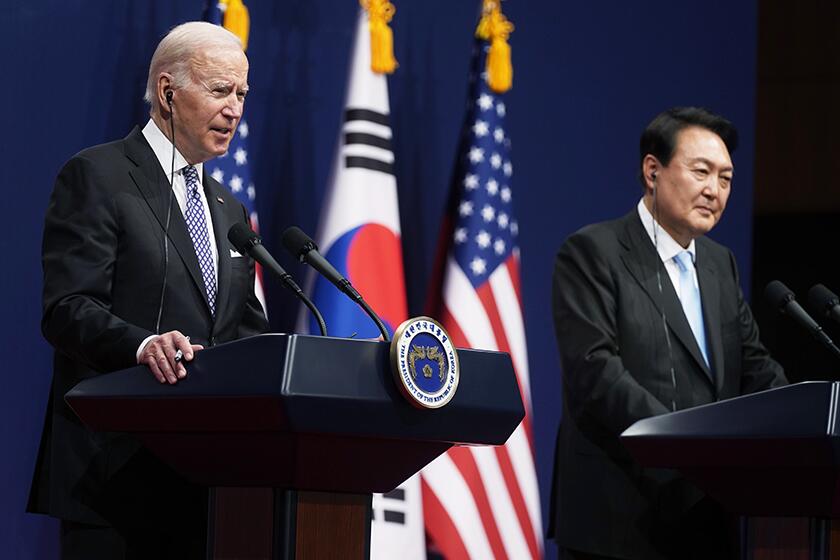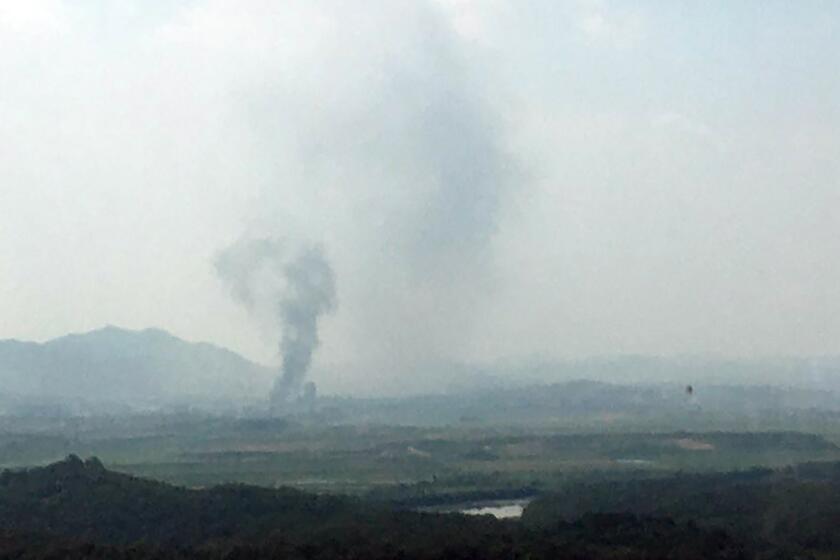Will North Korea be a bigger threat under Biden or Trump?
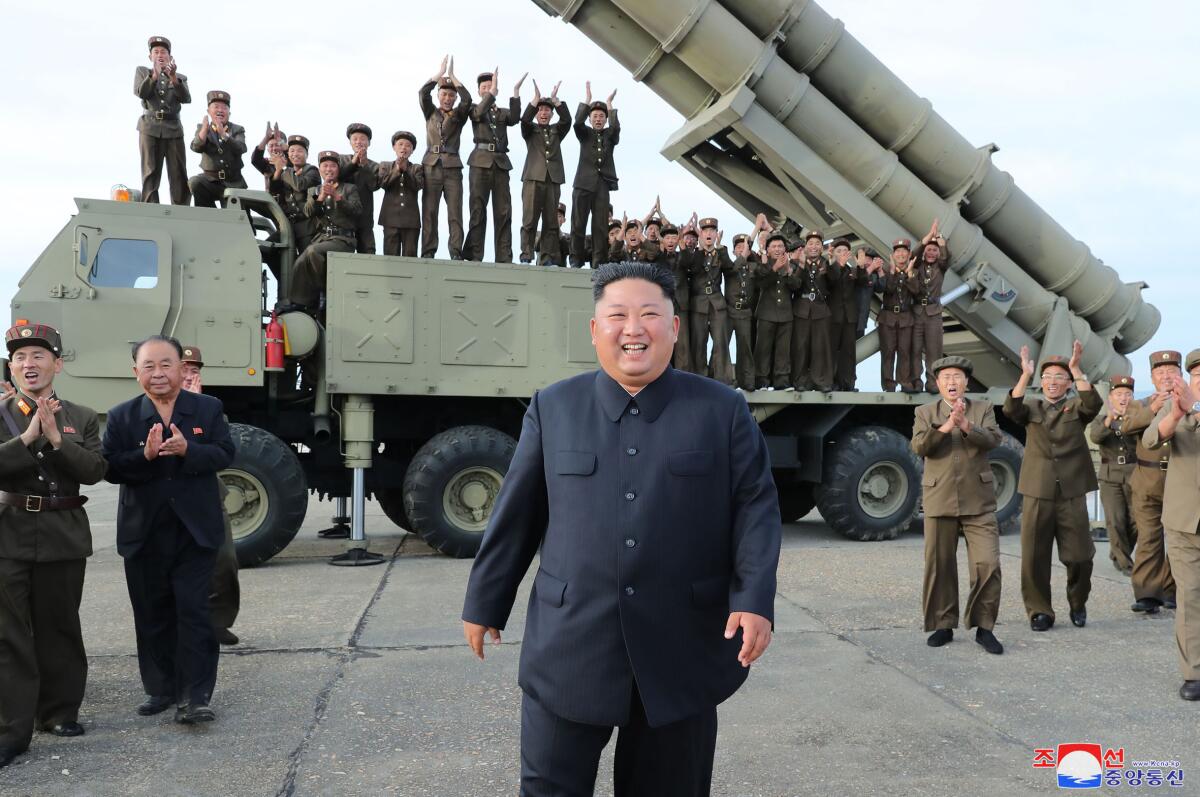
SEOUL — Faced with other more pressing developments in Ukraine and Gaza, the Biden administration has largely kept the threat of North Korea’s nuclear program on the back burner.
But tensions around the Korean peninsula have been ratcheting up for years, opening a new and uncertain chapter in a pitched standoff that, just six years ago under then-President Trump, seemed to be on the cusp of a major breakthrough.
So what happened? And what lies in store for whoever wins the White House in November?
In 2018, hopes ran high that North Korea might finally relinquish its nuclear arsenal.
Following three summits between then-South Korean President Moon Jae-in and North Korean leader Kim Jong Un, the two countries issued a joint declaration pledging better ties between the countries, the easing of military tensions and a mutual commitment to the “denuclearization of the Korean peninsula.”
With growing mistrust between the the U.S. and China, an election between President Biden and Donald Trump looks like a lose-lose scenario for China.
That unprecedented document, the Panmunjom Declaration, set the stage for meetings between Trump and Kim Jong Un, who had until then been slinging insults at one another, with Trump belittling Kim as “little rocket man” and Kim calling Trump a “dotard” — or a senile old person.
Held over the course of 2018 and 2019 in Singapore, Hanoi and the Korean Demilitarized Zone, the three meetings produced several gestures of goodwill, such as Pyongyang repatriating the remains of American soldiers who died in the Korean War and dismantling several rocket launch sites. At the DMZ, Trump became the first sitting U.S. president to set foot on the North Korean side of the border.
But the meetings failed to achieve a denuclearization deal, running into the same intractable problem that has defined the conflict for decades: the United States’ reluctance to accept anything less than total and immediate nuclear disarmament and North Korea’s equal reluctance to surrender its primary source of leverage.
Things have gone downhill ever since.
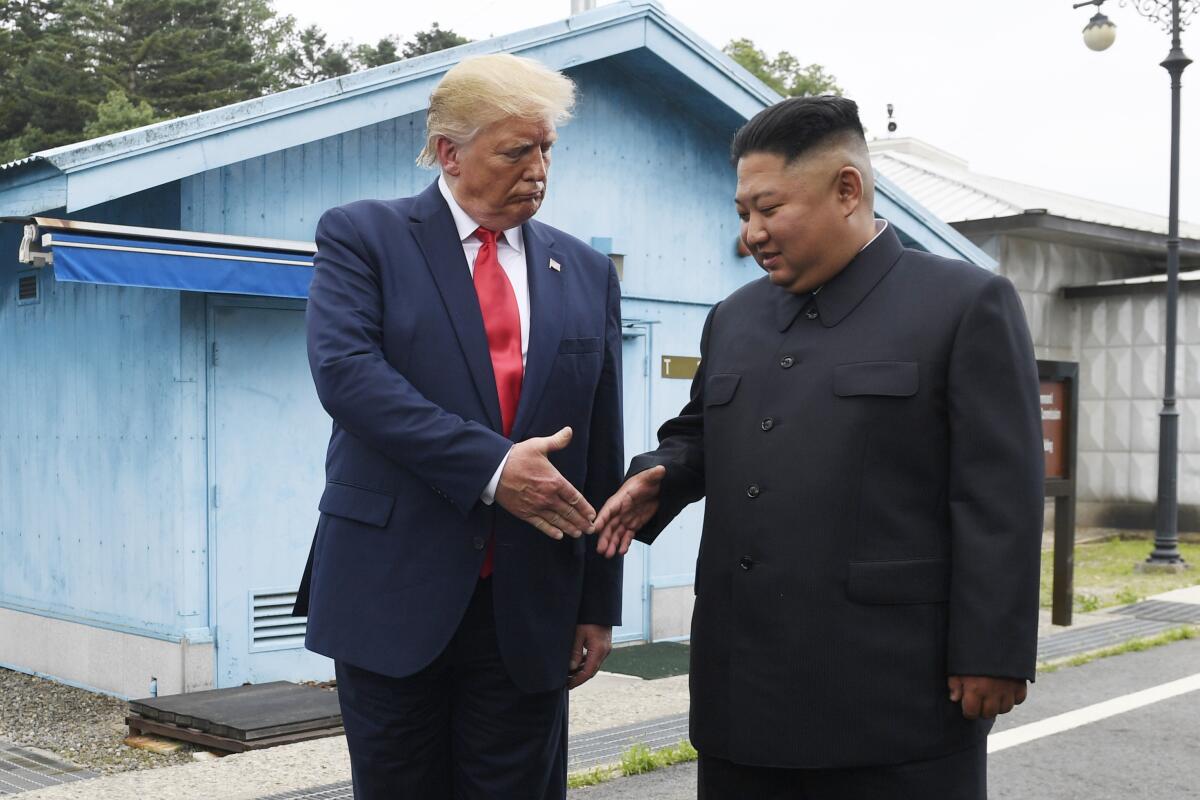
In June 2020, North Korea blew up a joint liaison office that had been installed on its side of the border to facilitate communication with Seoul. It also resumed its nuclear program, rebuilding the nuclear test site it had partially demolished following the Panmunjom Declaration.
North Korea has launched more than 100 missiles since 2022, and U.S. and South Korean officials have said it is likely preparing to conduct its seventh nuclear test — the first since 2017.
In September 2022, North Korea passed a law officially declaring itself a nuclear state, with Kim Jong Un vowing that the country would “never give up” its nuclear arsenal, which is estimated to contain at least 40, and perhaps more than 100, warheads.
The new law specifies several scenarios in which the country would use nuclear weapons, including preemptive strikes in the event of imminent attack.
As a result, the last few years have seen increasingly combustible military postures by both Koreas and the United States.
“North Korea has obviously never had this many nuclear weapons, especially those of such technological sophistication, when it comes to delivery methods or strike range,” said Kim Dong-yup, a professor at the University of North Korea Studies in Seoul.
“But all the negotiation channels or mechanisms that North and South Korea had for preventing escalation or misunderstandings are gone. The safety pin has been pulled out.”
In response to North Korea’s growing nuclear might, the Biden administration has resumed military drills with South Korea that had been paused under Trump. It has said that any nuclear attack by North Korea “will result in the end of that regime.”
South Korea has also been honing its strategy to decapitate North Korean leadership, while Kim Jong Un, who recently repudiated the once-shared goal of Korean reunification, labeled South Korea as his regime’s “primary foe.” Given these competing moves, altercations seem inevitable, experts say.
“I don’t think the chances of a full-blown war are particularly high, because there is now an element of greater deterrence in play,” Kim, the professor, said. “But the likelihood of smaller-scale conflicts has risen significantly, especially in areas near the border with North Korea.”
Technically, the Korean War never officially ended. The hostilities halted in 1953 with an armistice, not a peace treaty.
Biden on Saturday said that any meeting with North Korean leader Kim Jong Un would “depend on whether he was sincere and whether he was serious.”
Biden, if reelected, is widely expected to pursue his current strategy of maintaining sanctions and military deterrence, keeping with his wider regional strategy of expanding U.S. influence in Asia.
Under President Yoon Suk-yeol, a conservative, South Korea joined a U.S.-led trilateral military alliance with Japan — a buffer against China as well as North Korea.
But that is not to say the door to dialogue with North Korea is shut.
In March, senior U.S. officials said that they would be open to exploring “interim steps” toward denuclearization with North Korea, but that the goal of nuclear disarmament remains unchanged.
Yet this is essentially the same offer that has failed to produce meaningful outcomes in the past — including at the Trump-Kim summits — and North Korea has been ignoring the Biden administration’s attempts to make contact.
“The worst kept secret in the Korea policy community is that demanding denuclearization of North Korea is a nonstarter — totally unrealistic,” said Van Jackson, a former Pentagon official and currently a professor of international relations at Victoria University of Wellington in New Zealand.
“North Korea will come back to the negotiating table only if it receives presidential honors like summits, or tangible accommodations that signal turning over a new leaf — sanctions relief, ending the Korean war,” he said.
“There’s a way in which North Korea’s position here is understandable,” Jackson added. “They don’t have any intention of denuclearizing and they’d be foolish to disarm without having confidence that their much larger adversary is not really an adversary anymore. “
A Trump win would entail far more variables.
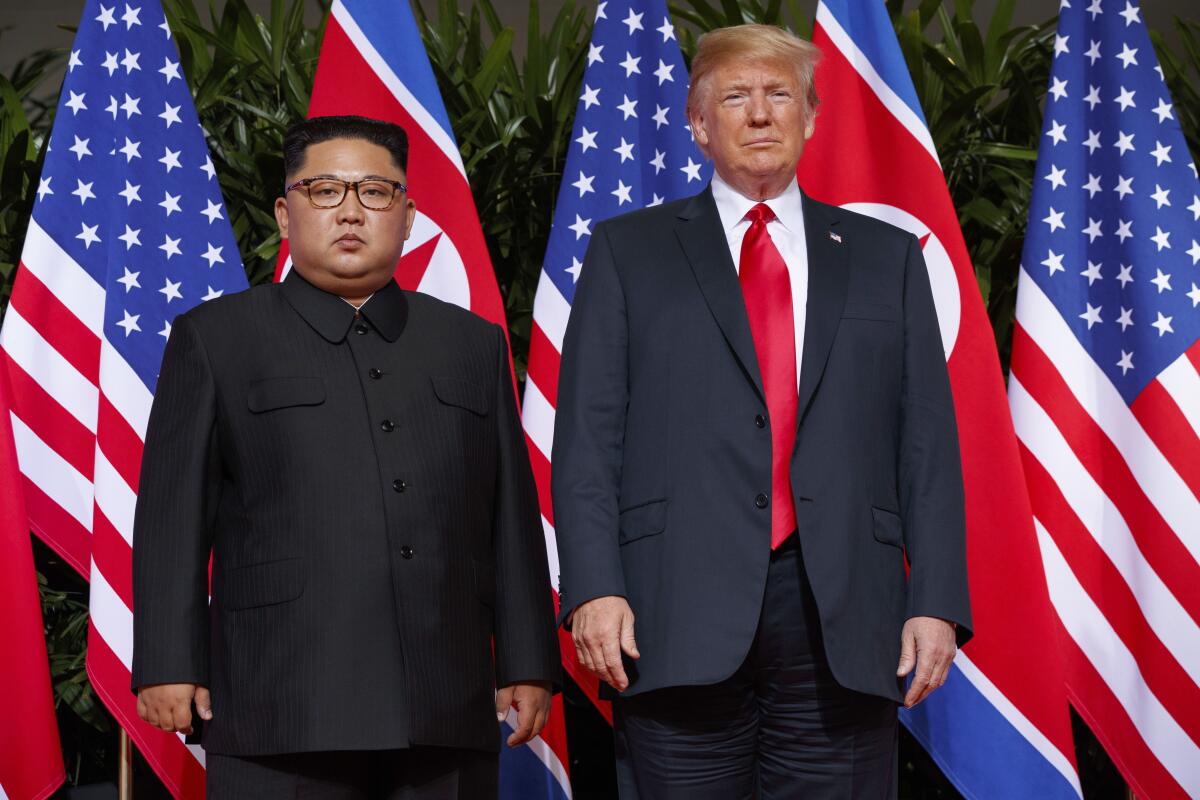
“There’s an assumption that if Trump reaches out to Kim, that they would immediately resume their love letters, but we have to remember that Kim was blindsided and jaded by the Trump team in Hanoi, so he will not necessarily come running to Trump,” said Andrew Yeo, a senior fellow at the Brookings Institution.
In other words, drawn out once with the prospect of a groundbreaking deal that never materialized, a warier Kim may not be so quick to do so again.
“Additionally, the geopolitical landscape has changed where Kim has much more support from China and Russia than during the first Trump administration, so he may have less incentive or need to talk to the U.S.,” Yeo said.
In May 2022, China and Russia both vetoed a U.S.-led effort at the United Nations Security Council to increase sanctions on North Korea, which has in recent years cozied up to Moscow, itself the target of sanctions for the invasion of Ukraine.
Following his meeting with Vladimir Putin in September 2023, Kim Jong Un has sought Russia’s help in launching its own spy satellites, sending in return artillery shells, mortars and short-range ballistic missiles for Russia’s war with Ukraine.
Still, many Asia experts believe that dialogue with North Korea is more likely under Trump rather than Biden — with the possibility of a second round of high-level meetings on the table.
“If Trump wins, I fully expect Kim to press the ‘Hey, remember me?’ button and resume summit diplomacy,” Jackson said. “But it’s totally unclear how Trump would respond to that this time around.”
In the event of another summit, the question is how much ground Trump would be willing to give for the sake of consummating a deal to his credit — whether he might, for example, be open to a nuclear freeze rather than disarmament.
North Korea’s destruction of a ‘useless’ inter-Korean liaison office just inside its border with the South has boosted tensions on the peninsula.
“The bureaucracy under Trump will still have hawkish preferences, but if Kim Jong Un is able to manipulate Trump, it’s much more likely this time around that Trump will be able to impose his preferences for Korea,” Jackson said. “In 2018 and 2019, Trump faced a lot of resistance from civil servants and political appointees, but MAGA has since built a cadre of loyalists who are going to exist to ensure Trump’s whims are carried out.”
Yet even dialogue that doesn’t lead to tidy deals may be worthwhile as a kind of pressure valve — a way to ease growing tensions, said Kim Dong-yup, the professor.
“It provides an opportunity to rethink and temper hostile stances,” he said. “And once you begin talking, new solutions may emerge over time.”
More to Read
Sign up for Essential California
The most important California stories and recommendations in your inbox every morning.
You may occasionally receive promotional content from the Los Angeles Times.

